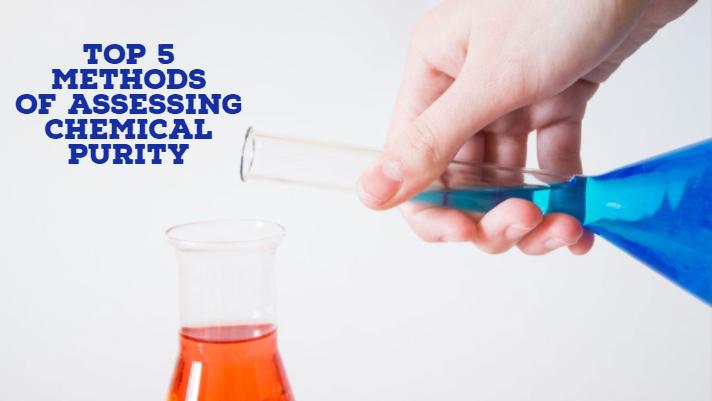

The United States stands as the largest chemical producer in the world. However, the accolades should be directed to the chemical manufacturers who are involved in mixing these chemicals and coming out with a particular chemical that is used for a particular role. These manufacturers are always involved in a hard and complex task of determining chemical purity. It's important to highlight that an impure chemical could have devastating impacts on the users, especially in the medical sector, where people use chemicals for medical purposes. But how do chemical manufacturers assess purity?
Assessing chemical purity is a complex task that involves incorporation of several styles and techniques that will give clear information on the composition of a particular chemical. The most important activity in determining chemical purity is understanding the specific components of a particular chemical and its physical or chemical properties. Some of the strategies used by chemical manufacturers to determine the purity of chemicals have been discussed below.
1. Use of Radiolabeled compounds
Radiolabeled compounds are carbon compounds that are used in chemical and biochemical processes of understanding the chemical constituents of a particular compound. Radiolabeled compounds are mostly used in the drug development stage and help in highlighting the compound formed after two or more molecules combine. Therefore, in a chemical process, radiolabeled compounds will be very useful in highlighting the physical and chemical properties of a particular product that has resulted after two or more chemicals combine. It is important to highlight that drug manufacturers know drugs by assessing physical and chemical properties.
2. Physical Comparison with Pure Standard
Physical comparison has been used in understanding the purity of a particular compound. It is the simplest method of checking purity as it only involves comparing a particular chemical with a certified pure sample. There is an argument against the use of physical comparison, but it is obvious that this method can show significant differences between products. Physical comparison is very useful in revealing large impurities such as colored impurities and dirt. Smell tests will also reveal the differences between the chemical undergoing tests and the actual and pure state of a particular compound. However, it's important to note that only non-toxic chemicals can be tested through touch, taste, and smell.
3. Boiling and Melting Point Determination
It is obvious that the physical properties of a chemical can be used to indicate whether it is pure or not. Most of the chemical products have defined boiling and melting points. Pure chemicals are known to boil and melt at specific temperatures, and that is documented. However, if the melting point of a particular chemical is lowered, there is a great sense that the chemical is not pure. The boiling point will be higher than normal. This is a simple method of determining the purity of a product and is highly applied in various chemical manufacturing plants.
4. Colorimetric Methods
The colorimetric method is another widely used strategy of determining the purity of a chemical compound. Biochemically, some chemical compounds change into a particular color when they are exposed to a certain chemical. This is widely known, documented, and used as a standard way of determining the purity of various products. One of the major applications of the colorimetric method is in determining the presence of specific illegal drugs such as cocaine and heroin. Colorimetric purity testing is highly preferred because it does not only indicate the purity of a chemical but also the percentage purity.
5. Analytical Testing
Although other methods of testing purity are highly appropriate and advanced, analytical testing is the most accurate and highly preferred method of testing chemical purity. Analytical testing involves a standard procedure that is used in testing various chemicals. These procedures are applied in drug and chemical industries, and they indicate the presence and the number of impurities. Some of the analytical purity testing methods include titration, infrared spectroscopy, paper chromatography, and optical rotation, among others.
These are some of the strategies used in testing the presence of impurities in chemical compounds. However, the method that one applies depends on the resources available, the magnitude of the entire process, and the chemical under consideration. However, any method is likely to indicate the presence of impurities in a particular chemical.
